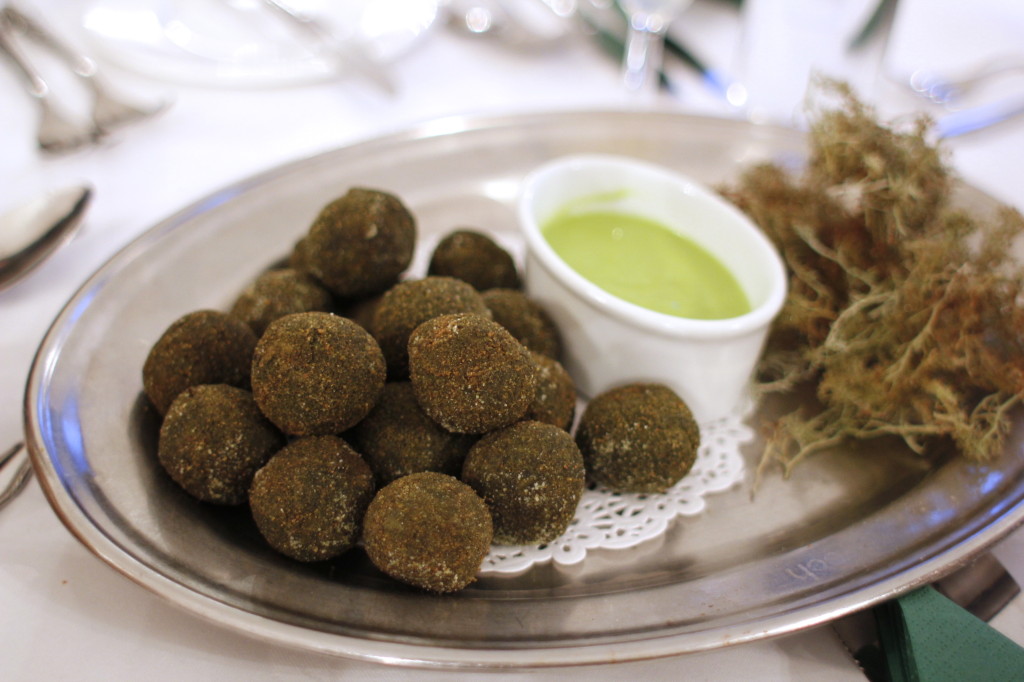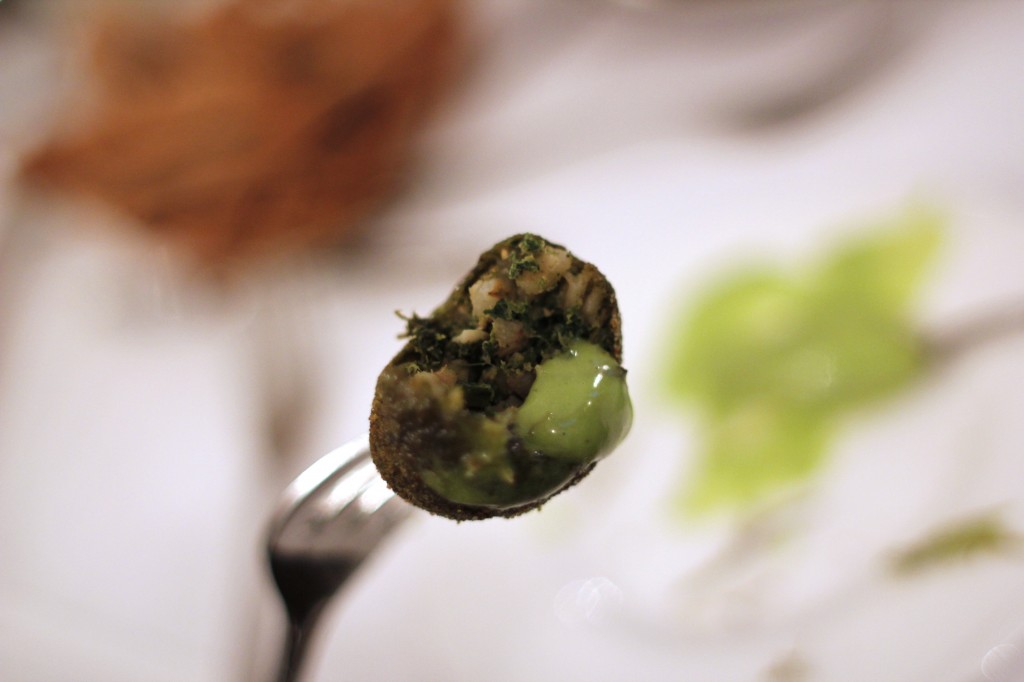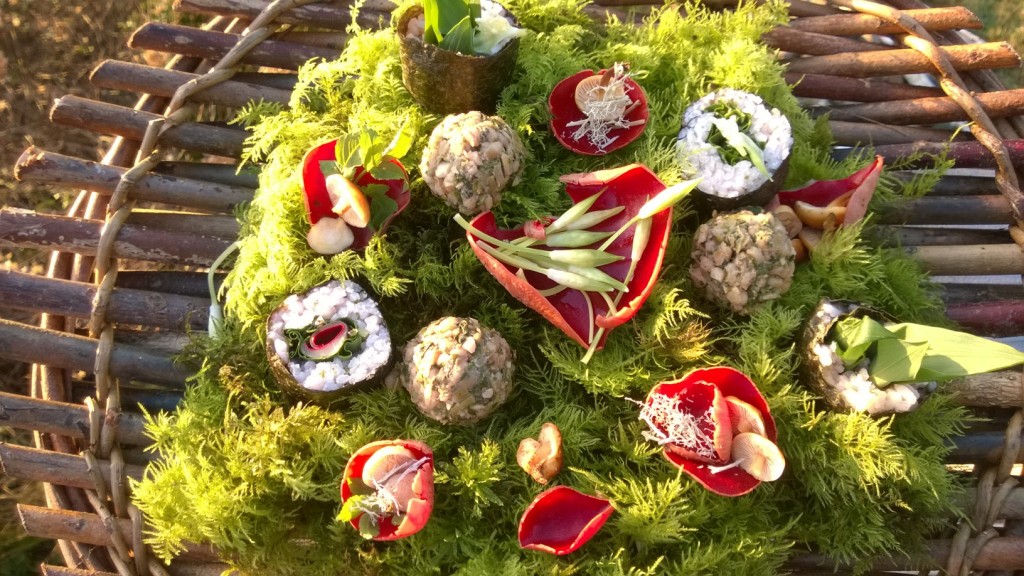Dock, Dandelion and Nettle Spring Puddings
People can get obsessed with uncommon wild foods such as morels, truffles or oyster plant. But the purest joy of foraging is getting to know the vast array of common ingredients that hide in plain sight, and learning how to harvest, cook and eat them in surprisingly delicious ways.
Few wild foods are as abundant or easily recognised as the 3 main ingredients in these savoury spring mini-puddings. The recipe was kindly shared with me by my friend and chef Chris Hruskova who served them at one of my gourmet spring foraging days. You can read about the amazing wild banquet he prepared here. Chris in turn credits his sous chef for refining a recipe inspired by legendary French forager and ethnobotanist Francois Couplan. But they are really just the tastiest variation I have found on the classic “spring docken” or “easter ledger pudding” that are traditionally eaten in areas of northern England during spring.
The two main ingredients of the puddings are dock and dandelion, both of which have strong bitter flavours even when the leaves are young and tender in early spring. Mollycoddled modern palates often struggle to cope with the bitter flavours that would have been an important part of our diet historically, when they were eaten to stimulate the digestive system after a winter of eating from autumns preserves.
Three hyper-abundant spring greens:
If this recipe is starting to sound worryingly bitter, don’t fear: I’ve never been a big fan of the bitterness of dandelions (though they do make a mean tonic) and only really enjoy most dock varieties when very young (with the exception of sorrel), but this recipe tempers them both perfectly. Even better, you can substitute pretty much any wild green you like to suit what’s available near you and your personal taste.
I think most people can recognise dandelions and nettles (remember to only gather the topmost 6 or so leaves from pre-flowering nettles). The most common species of dock around the UK is usually broad-leaved dock (rumex obtusifolius) which is likely to have been brought to most people’s attention as an antidote to nettle stings (you’re actually better off rubbing them with a plantain leaf, but i’ll save that for another blog). There are a lots more dock (rumex) species about though, including: curled dock (rumex crispus) – which I find mostly coastally; common sorrel (rumex acetosella) which you can find almost anywhere; and bistort (persicaria bistorta) which likes damp field edges and verges and is less bitter than many of its relatives, which is probably why it is traditionally the main ingredient in traditional spring puddings. Anyway, the main thing to remember is that all of them, picked in the spring and preferably before flowering, will do just fine – so will almost any other wild spring green for that matter.
Three common members of the dock family:

Bistort leaves and flowers, May. Sadly, by the time the leaves are this size, they are past their best for eating
There is a fair bit of faff to this recipe, much of which (eg. blanching, pané) can be omitted if you’d prefer a more rustic finished product. You don’t have to go to trouble of rolling the mixture into little balls either – it could be gloriously served as a “weed pudding” centrepiece of a buffet. But there is something I quite enjoy about taking the time and effort to cajole these common weeds into a refined savoury “truffle” that would grace any fine dining menu. Things don’t have to be rare to be amazing!
Ingredients
Makes about 35 mini puddings or one clonker
- 400g pearl barley
- 8 eggs
- Half a carrier bag of wild leeks or 2 large cultivated leeks
- About half a carrier bag of washed dock and dandelion leaves – or any other spring green with a reasonably strong flavour such as nettle, plantain, ground elder, hogweed shoots, watercress etc. You can also use the spring staple wild garlic, but they do tend to lose a lot of their pungency when cooked
- Ice
- A handful of any finely chopped aromatic wild herbs you fancy (optional) – cow parsley is really common at this time of year, and the roots of wood avens still have plenty of flavour.
- Finely milled dried seaweed (optional). Laver (aka nori), gutweed, pulse, sea lettuce and pepper dulse all work well as seasoning/umami
For the pané (optional)
- 4 tablespoons fine dried bread crumb – if, like me, you are rubbish at saving up breadcrumbs, try blitzing up some breadsticks
- 1 egg
- 4 tablespoons dried, blitzed nettle (optional) for pané – this is easily made if you have a dehydrator, or can be done in a very low oven. Failing that, you can buy it in most health food shops
- Flour
- Vegetable oil for frying
Method
1. Boil the pearl barley until tender, drain and put a side to cool.
2. Hard boil 4 of the eggs and chop fine.
3. Chop the leeks fine and sauté in a bit oil until soft.
3. Blanch your half carrier bag of greens in boiling water for 20 seconds and refresh in iced (or very cold) water. You could leave out this stage, but your finished pudding(s) will be more bitter and lack some of the vibrant colour.
4. Thoroughly squeeze all the water out of the blanched greens and chop fine. If you leave them wet and soggy, your mixture is less likely to bind together.
5. Mix the chopped eggs, leeks, barley, chopped greens, aromatic herbs and powdered seaweed (if using) together with 3 raw eggs.
6. Season very well with salt and pepper.
7. Place mixture in a large tray and wrap the tray really well in cling film and place in a larger tray of hot water (bain-marie). Alternatively, seal the mixture in a bowl with greaseproof paper, foil and string as described here. Place the bowl in a pan with water that immerses at least half the bowl, ensuring the bowl isn’t in direct contact with the base of the pan (an upturned saucer works well for this).
8. Steam the mixture for 45 – 60 minutes in the oven (160° C) or on the hob. It should stick together well enough to be rolled into balls when it comes out. If not add 1 or 2 more raw eggs, mix and steam for longer.
9. If you wish to serve as a large pudding, turn out onto a plate and serve.
10. If you are serving as mini-puddings, roll the mixture into small balls (this can be tricky and requires a delicate touch – its easier to roll when warm) and then refrigiate them. The mini-puddings can be frozen at this stage, but be sure to freeze them individually before bagging. If you don’t want to bother with the pané, you could just flour and fry them at this stage.
11. Blend the dried, blitzed nettles with the fine dried bread crumb.
12. Lightly beat the raw egg with a fork.
13. Roll the chilled balls in flour, then in the beaten egg and then in the bread/nettle mixture and deep fry in vegetable oil for 1 to 2 minutes or until the pané is pleasantly browned.
14. Serve warm. They go particularly well with wild garlic mayonnaise, fermented wild leeks, deep fried reindeer moss dusted with powdered cep or any other finger-foods that wild ingredients so happily lend themselves to.
Related Pages:
- Wild Food Recipes
- Wild Booze Recipes
- In Season Now
- Spring Foraging
- Learn To Forage with Galloway Wild Foods







